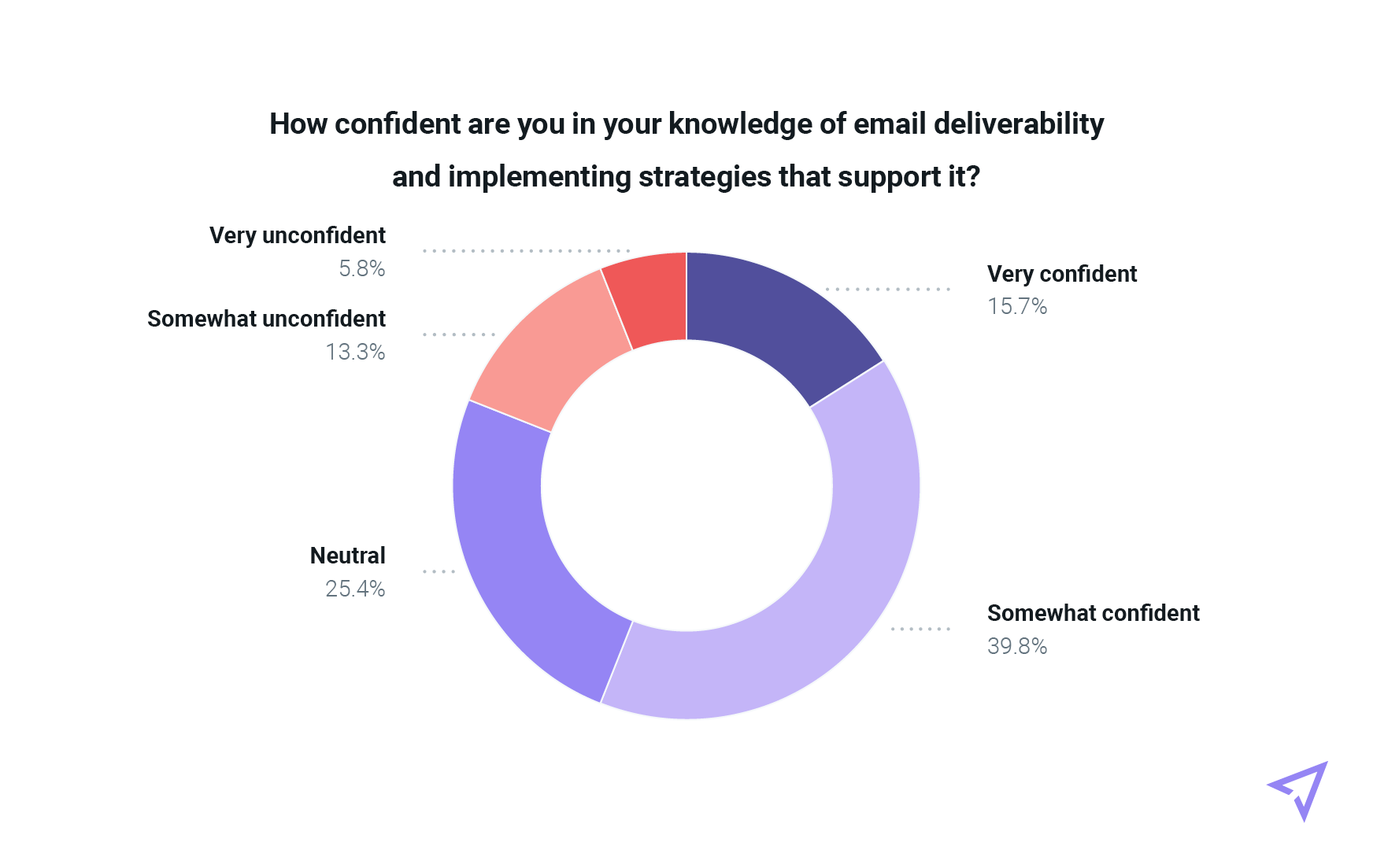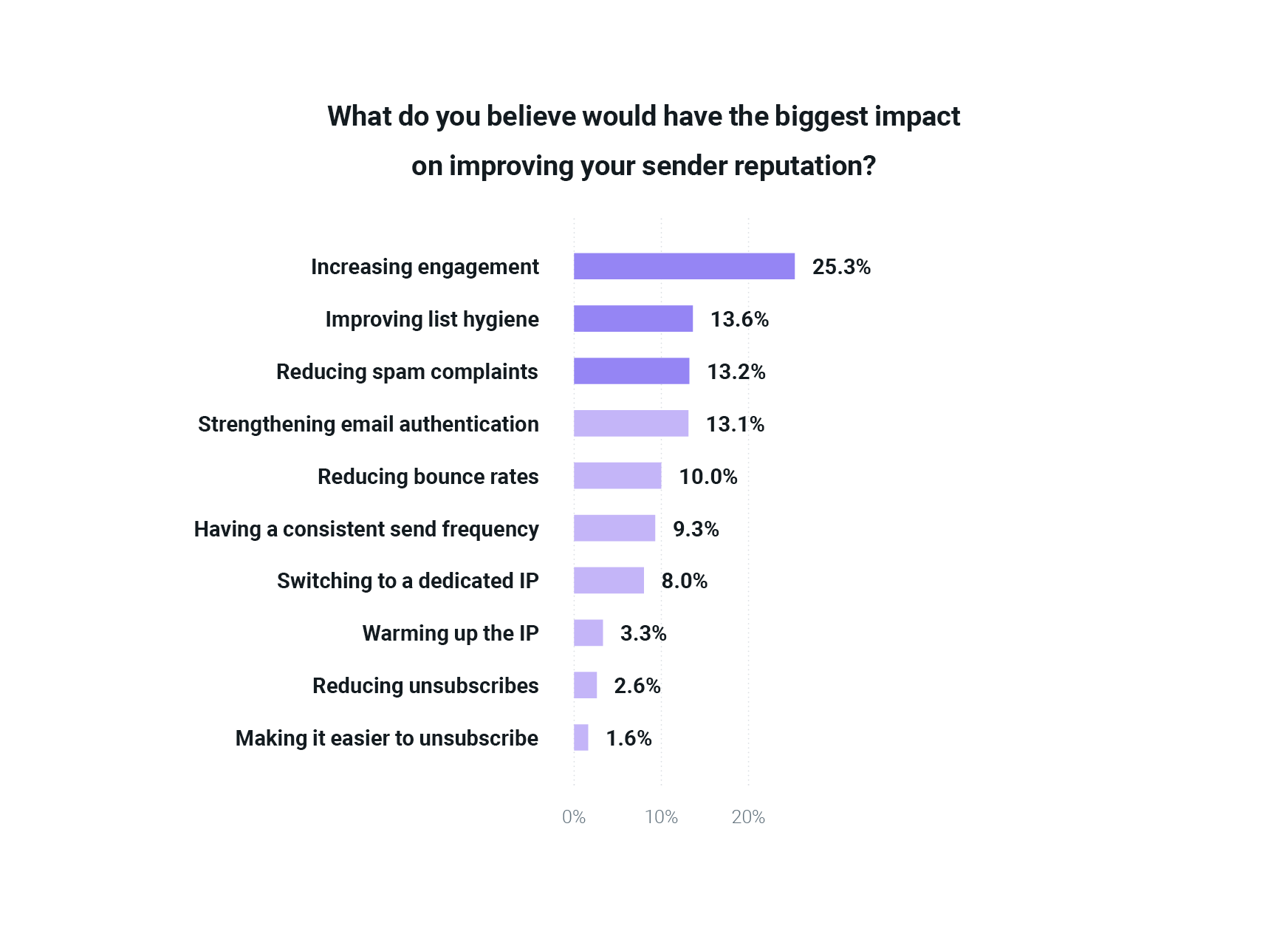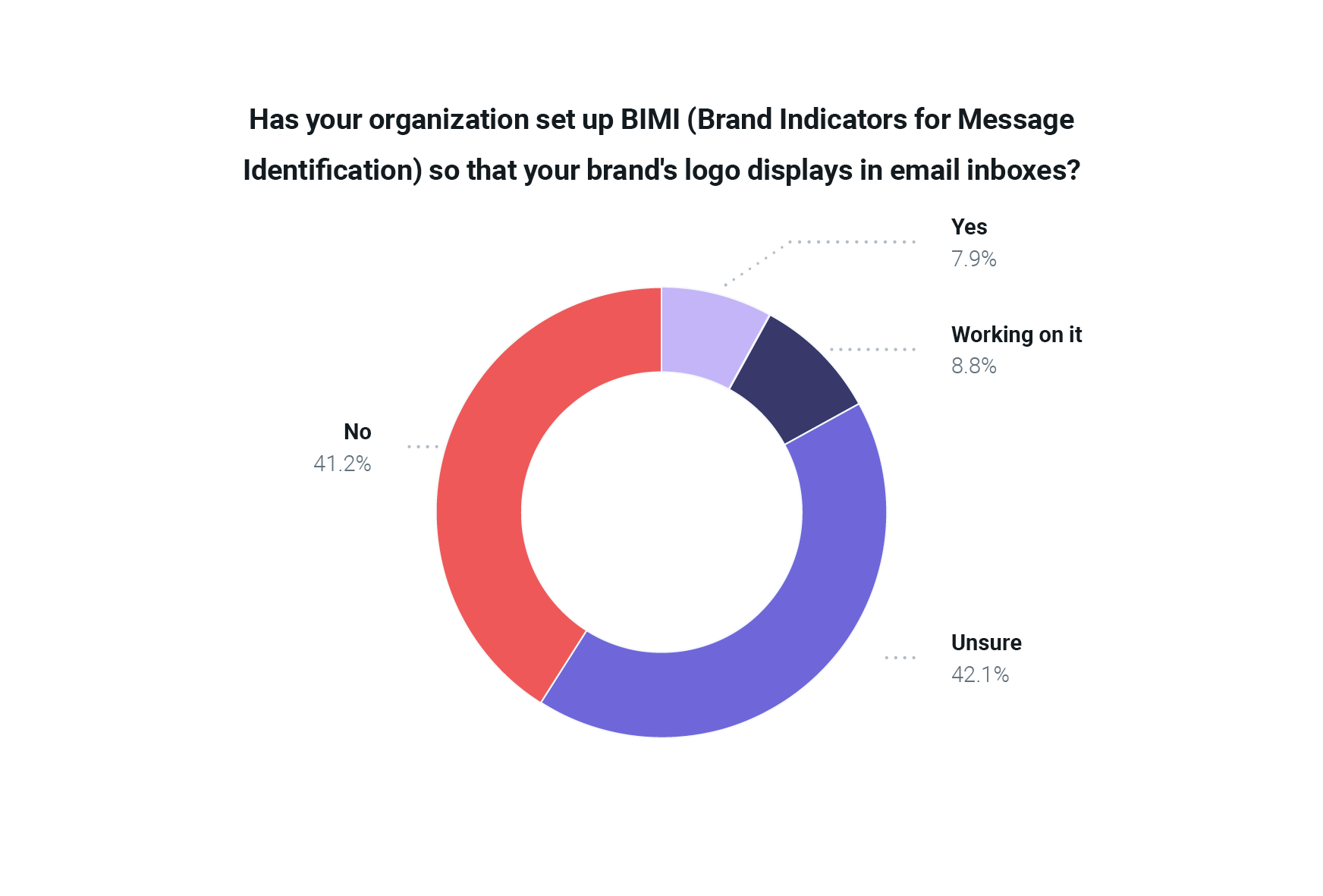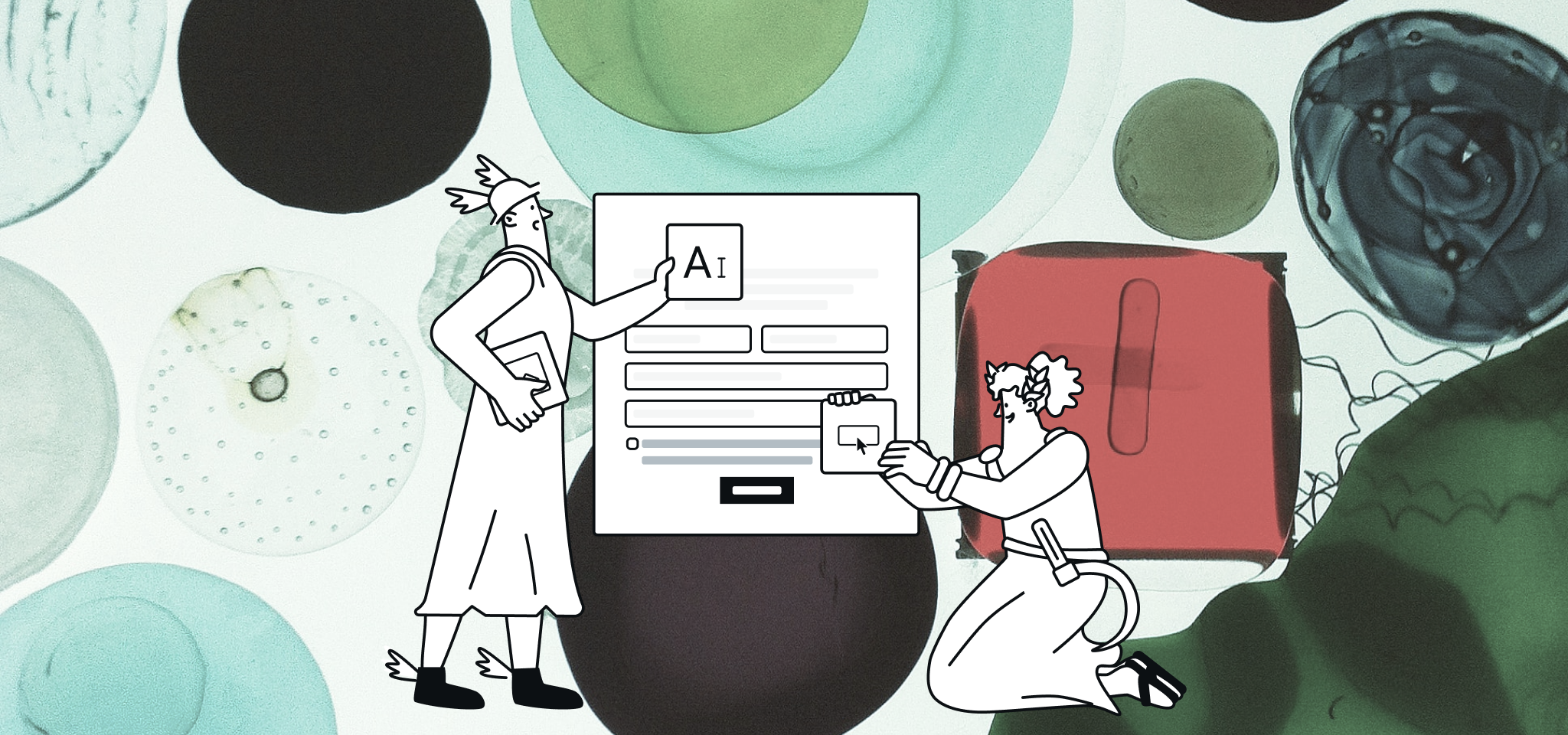Deliverability
What do marketers need to know about email deliverability?
There’s more to email deliverability than meets the eye. So, what can marketers do to avoid the spam folder and increase their chances of reaching subscribers’ inboxes? Keep reading to get insights from a global survey of senders.

PUBLISHED ON
What does the term “email deliverability” mean to you? The truth is...there’s a lot more to it than simply getting messages delivered.
If you think of email deliverability as the best practices you follow to avoid the spam folder and blocklists, you’re getting closer. But have you ever been bummed to find out a big campaign was ending up in Junk, and you had no idea why?
Was it something you did wrong or just some sort of technical hiccup?
While there are technical aspects of deliverability that email marketers may have little control over, there are many things marketing teams can do to improve inbox placement. Of course, you could also be doing damage to email deliverability. Let’s look at the role marketers play in reaching the inbox and staying out of spam.
Table of contents
Why should marketers care about deliverability?
The state of email deliverability survey
Earlier this year, we invited customers to take part in a global survey on email deliverability from our sister brand, Sinch Mailgun. More than 1,900 senders completed the survey, including over 900 Sinch Mailjet users.
Respondents included email marketers, as well as IT professionals, software developers, small business owners, C-suite executives, and more. A wide variety of industries were represented as well as those with email send volumes large and small.
The final report, The state of email deliverability 2023, offers an excellent snapshot of what various types of senders know about the topic and what they’re doing to support inbox placement.
It’s clear that most senders see value in achieving high deliverability. We asked respondents to rank how much they prioritize email deliverability on a scale of 0 to 100. Nearly two-thirds (65.7%) ranked deliverability at 80 or higher, suggesting it is an important business goal.

Unfortunately, saying email deliverability is a priority doesn’t necessarily mean a sender is doing what it takes to reach the inbox. Here’s the reality of the situation... What you don’t know about email deliverability could definitely hurt your business.
Understanding email deliverability
The survey also asked senders about their confidence level when it comes to email deliverability.
Not many respondents were willing to admit they lack knowledge on the topic. In fact, a combined 55.5% said they were either Very or Somewhat confident in their understanding of deliverability and strategies to support it. Then again... It’s impossible to know what you don’t know.

Because deliverability can get complicated, the survey often allowed senders to say they were “Unsure” of the answer. Not everyone knows their organization’s DMARC policy, for example. Still, the “Unsure” option was often selected more than 25% of the time.
Uncertainty around email deliverability tended to rise when we looked only at respondents in marketing roles.
44.5% of marketers were Unsure of how to describe their email sending infrastructure.
31.1% of marketers were Unsure if they’d been blocklisted in the last two years.
52.8% of marketers are Unsure if their organization is using or pursuing a BIMI logo.
You’ve got to wonder how survey results around confidence and knowledge might have changed if we asked this question at the end of the survey instead.
Why should marketers care about deliverability?
If terms like IP reputation, authentication protocols, and email sending infrastructure sound only vaguely familiar, you might be a marketer.
Usually, these areas of expertise fall on the shoulders of the IT department. In other cases, your email service provider (ESP) may be taking care of technical aspects that support email deliverability behind the scenes.
Still, marketers need to care about deliverability because it has a direct effect on the customer experience and your ROI from email. That includes the experience of subscribers who are on their way to becoming paying customers. 40% of senders who prioritize email deliverability say the biggest benefit of doing so is Increased customer satisfaction. That’s more than double the next most popular answer.
Increased revenue from email (18.6%) and Reaching more leads and prospects (13.3%) made the top three benefits. But the fact remains, email deliverability leads to satisfied customers because emails are a big part of the customer experience.

If subscribers miss a big promotion because your campaign landed in spam, they’ll be disappointed, and you’ll lose out on sales. If an important transactional email fails to show up in a customer’s inbox, it could be very frustrating, and you’ll end up eroding trust in your brand.
Deliverability is more than just SMTP servers and DNS records. Let’s take a closer look at how an email marketing strategy affects deliverability.
“Email deliverability leads to satisfied customers because emails are a big part of the customer experience.”
Deliverability and email list quality
You wouldn’t construct a building with rotting wood and rusty nails. So, why would you build an email list with invalid addresses, outdated contacts, and spam traps?
Spam traps are fake email addresses that blocklists and mailbox providers use to catch spammers. If you send to one of these spam trap addresses, it’s a sure sign you’re emailing people without consent. It’s also a good way to get blocklisted or sent straight to spam.
These fake email addresses get on your list if you purchase contacts or if you’re scraping web pages to collect emails. Old, abandoned email addresses may also be used as spam traps. These are shady and dangerous list building practices. However, our survey found that around 1 out of 10 respondents admitted their organization had purchased a list or scraped contacts.
If you can say the same about your email list building strategy, it’s time to conduct some list hygiene ASAP. List hygiene should be a regularly scheduled email deliverability best practice for all senders. However, the Sinch Mailgun survey found a combined 38.7% of respondents Rarely or Never conduct list hygiene.

There are tools to help senders automate list hygiene. But many senders have yet to take advantage of these solutions. The survey revealed that more than half of senders aren’t using automated email validation tools. Instead, 45.7% remove invalid and inactive contacts manually while another 26.7% don’t remove contacts unless they ask to be unsubscribed.
Note: If you’re using Sinch Mailjet for email marketing, all our paid plans already allow you to verify emails on your list are valid. Select plans can also validate new contacts at the point of signup.
“I always talk to our customers about list hygiene because I think it’s so important. Building and maintaining a healthy list is huge for email deliverability.”
Nick Schafer, Sr. Manager of Deliverability and Compliance, Sinch Mailgun
Email engagement and inbox placement
To support high email deliverability, your list hygiene strategy should be proactive. That’s because mailbox providers are paying attention to whether your subscribers are actually engaging with what you send. As levels of email engagement drop, the likelihood of getting sent to spam increases.
A double opt-in process is one way to be sure that new subscribers are likely to open and engage with your brand’s emails. That’s because it asks them to verify their intent to subscribe with a confirmation email sent to them after signing up.
A sunset policy is an effective best practice for identifying and segmenting subscribers who’ve stopped engaging with your emails. Once segmented, you can try to re-engage these contacts, send to them less frequently, or remove them from the list.
However, more than 50% of the senders Mailgun surveyed said they do not use a double opt-in and nearly 60% admit they aren’t implementing a sunset policy.
For many email marketers, the size of their list is a source of pride. But if you have loads of subscribers who never open or click on your campaigns, they’re doing you more harm than good. Too many people will simply ignore emails rather than unsubscribe. Sometimes, it’s the brand that needs to make the decision to stop sending.
When asked what they believed would help improve their sender reputation, senders identified Increasing engagement (25.3%) and Improving list hygiene (13.6%) as the top two options.

Of course, the truth is these two efforts are directly connected. When you conduct list hygiene and remove unengaged contacts from the equation, your email engagement rates rise.
“Personally, my focus would be on engagement, which ties heavily into list building practices. Make sure the recipients' addresses you’ve collected have agreed in a clear way to receive your emails from the start. Then, ensure they stay engaged with your emails over time.”
Alexandre Zibrick, Compliance and Deliverability Engineer, Sinch Mailjet
Deliverability and email sender reputation
Mailbox providers like Gmail, Outlook, and Yahoo! Mail all have their own sets of rules for determining if and where an email gets delivered. One way they decide if your emails get rejected, filtered to spam, or land in the inbox is by scoring your reputation as a sender.
Sender reputation has a major impact on email deliverability. As a marketer, a lot of the decisions you make can help or hurt your chances of reaching the inbox. Check out these two lists:
Good for sender reputation | Bad for sender reputation |
|---|---|
Good for sender reputation | |
An updated email list with verified addresses | Purchased or scraped email contacts on your list |
Bad for sender reputation | |
Highly engaged subscribers | Low email engagement rates |
Quality content in email campaigns | Lots of spam complaints |
Using a double opt-in process | Sudden jumps in list growth |
Removing or segmenting inactive subscribers | Ignoring list hygiene |
Strong email authentication practices | Lack of proper email authentication |
A history of consistent sending practices | Failure to warm up new sending IPs/domains |
Out of the seven items on each of these lists, at least the first five are almost always connected to the marketing team. List building tactics, levels of email engagement, segmentation, and delivering quality content – these are all factors that impact your sender reputation – which in turn affects deliverability.
Next, we’ll explore how the activities of email marketers can impact your sender reputation.
“It is very easy to destroy your sender reputation, but it takes time to build it. You can damage your reputation with Gmail overnight, and it can take about four to six months to repair it.”
Kate Nowrouzi, VP, Deliverability and Product Strategy, Sinch Mailgun
Email marketing and authentication
Email authentication helps mailbox providers confirm that a sender is who they say they are. Protocols such as Sender Policy Framework (SPF) and DomainKeys Identified Mail (DKIM) are used to stop spammers and scammers from reaching the inbox.
As a marketer, you may not have to worry about SPF and DKIM authentication. These are DNS records that the IT department or your ESP will most likely handle. But you certainly care about whether people trust emails from your brand. Email spoofing is a real problem, and strong email authentication protects your subscribers from bad actors who try to impersonate your brand through phishing attempts.
The state of email deliverability 2023 revealed there is plenty of uncertainty around the use of authentication protocols. While marketers may not need to understand every aspect, strong email authentication supports both your sender reputation and your brand reputation. So, it’s worth paying attention and learning more.
To encourage the adoption of effective email authentication methods, industry leaders introduced the relatively new BIMI specification. Senders that meet the right criteria are eligible to have an official logo displayed next to emails in mailboxes such as Gmail, Apple Mail, and Yahoo! Mail.

This bonus branding is a reward for setting up Domain-based Message Authentication and Reporting (DMARC) with a policy informing receiving mail servers they should reject or quarantine messages that fail SPF and/or DKIM authentication.
There’s evidence suggesting that inbox logos like this boost open rates and increase trust. That’s good for your email engagement rates, which supports deliverability. Research from Red Sift found inbox logos increase brand recall and purchase intent as well.
However, Mailgun’s survey suggests that less than 8% of senders have successfully implemented the BIMI specification.

Getting BIMI set up and working isn’t simple. But there’s a lot to gain. Senders with verified inbox logos in place identified the following as the key drivers for pursuing successful BIMI implementation:
Protecting brand reputation (24.6%)
Building brand awareness (23.4%)
Customer/subscriber trust (18.2%)
BIMI and email authentication represent just one example of how marketing and IT need to work together in support of deliverability. Inbox placement is part art and part science. Staying out of spam requires the knowledge and expertise of both email marketers and technical teams.
“Meeting in the middle and bringing technical teams and email marketers together is what helps you be successful. You’re able to have your marketing team meet their goals while making sure it’s done in a proper manner that supports deliverability.”
Ashley Rodriguez, Deliverability Engineer, Sinch Mailgun
Take on the challenge of better inbox placement
There’s a lot more to discover about the mysteries of email deliverability. We’ve only scratched the surface here.
The full report from Sinch Mailgun dives into topics such as email sending infrastructure, blocklisting challenges, measuring deliverability, and the differences between high- and low-volume senders. Plus, you’ll also find a list of important email deliverability best practices.
Working with the right technology partners is another way to improve email deliverability. At Sinch Mailjet, not only do we provide our customers with tools to support inbox placement, but we also have access to deliverability experts. Find out more about Deliverability Services and other options to help you get the most out of the email channel.
Download the full report
The state of email deliverability 2023
Dive deeper into email deliverability so you’re armed with the knowledge you need to stay out of spam. Get your hands on “The state of email deliverability 2023” and uncover the truth about what it takes to consistently land in the inbox.








